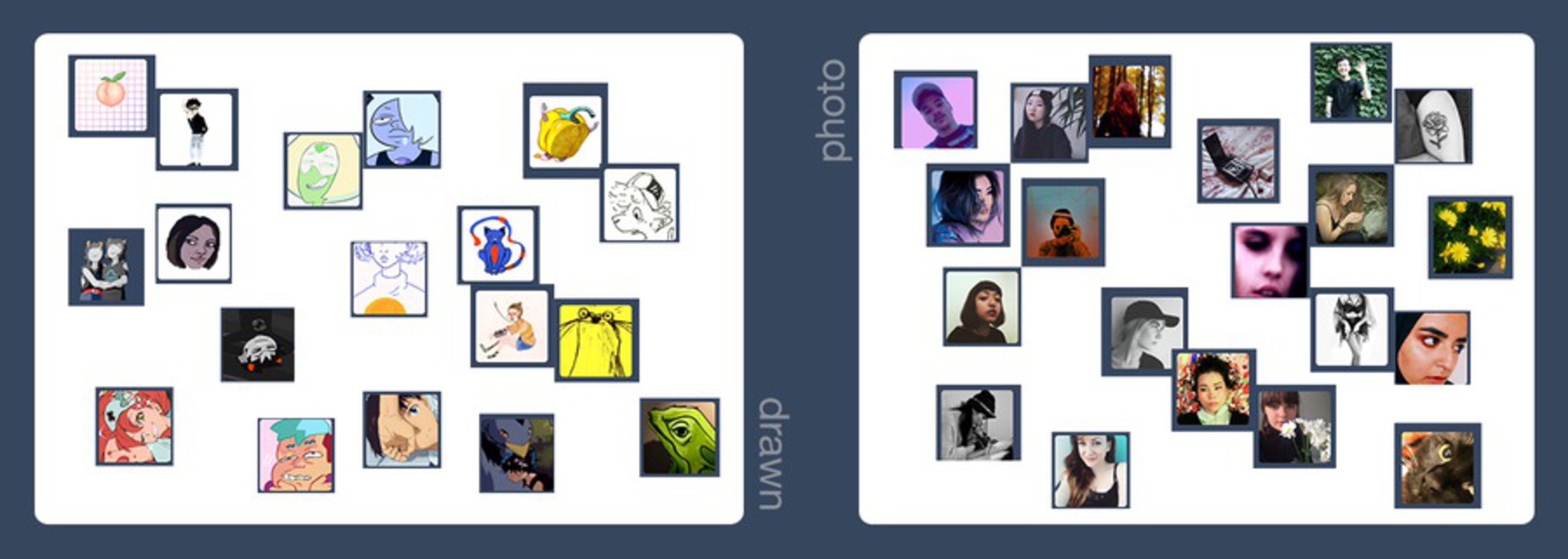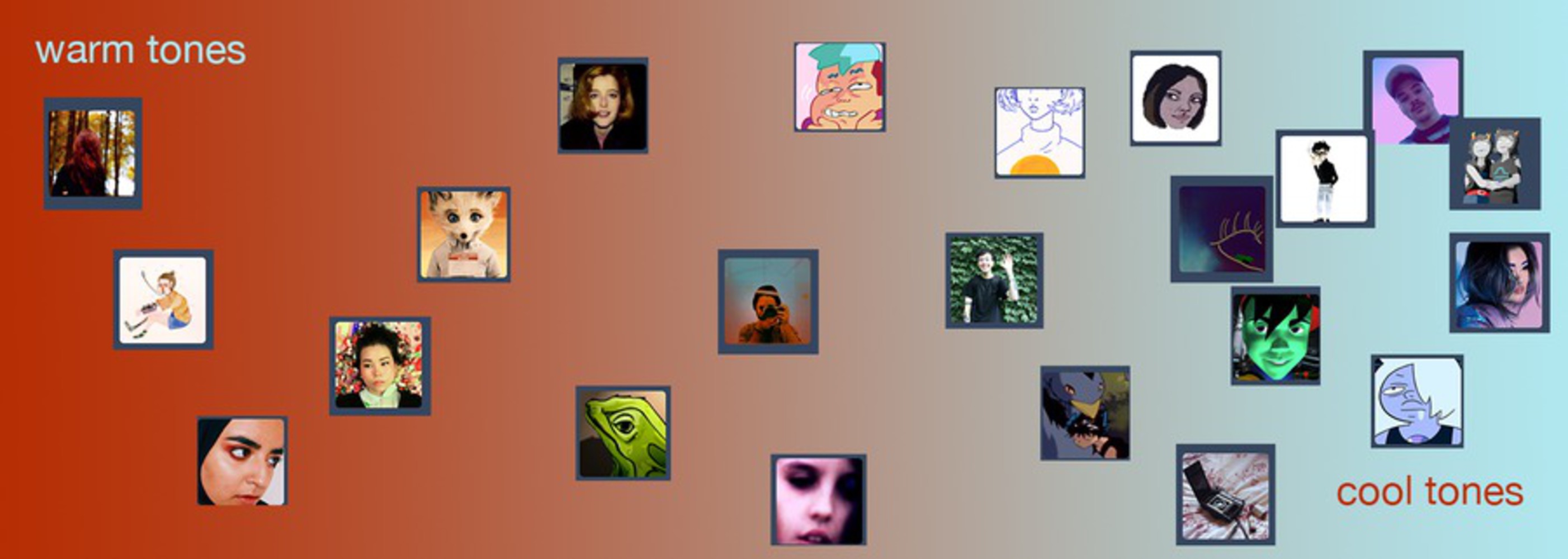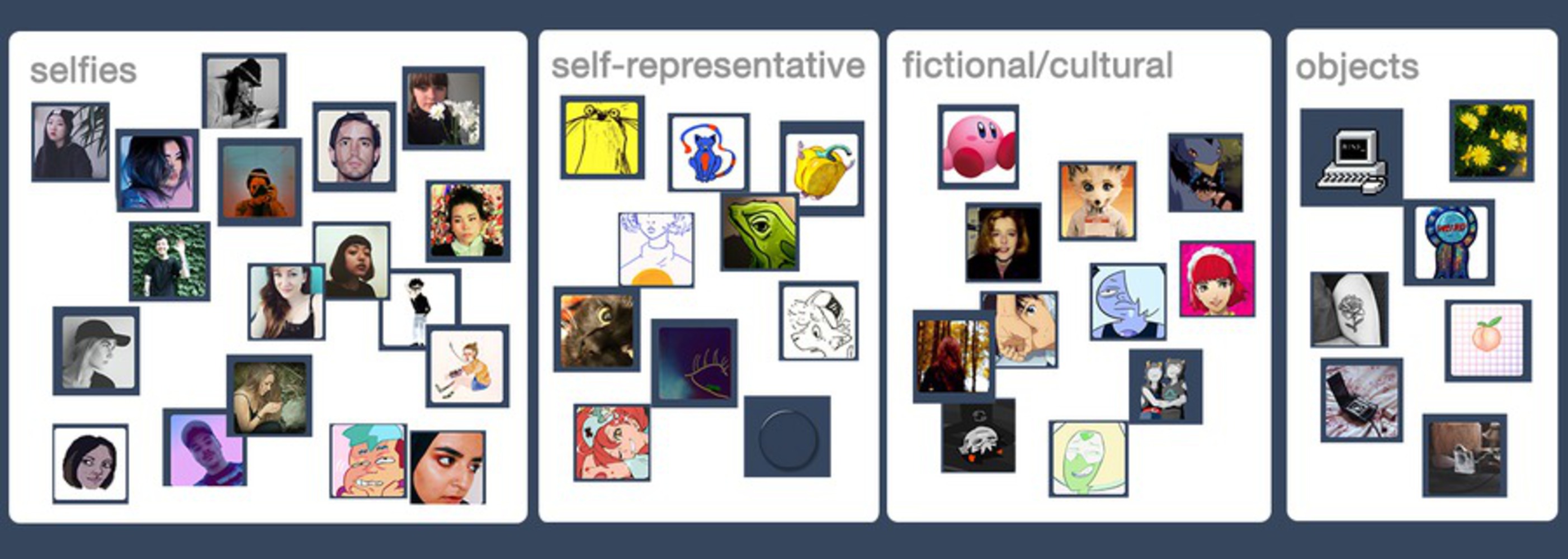Summary
Conclusions
Tumblr users employ a variety of creative means to represent themselves, often without using an actual image of themselves. Representation throught objects, characters, and other content can offer a surprising amount of information about a person, even without seeing images of their face. Content creators, who post mostly what they have created themselves (ie art, photography, humor) tend to represent themselves through their chosen medium, while content curators chose images that reflect the themes of what they post (ie fandom, specific aesthetic theme). Blogs that are not for personal use tend to use avatars that depict their object of focus rather than personal themes. In general, while many users choose not to show their faces, they do choose images that effectively communicate the blog persona.
In particular, I think this heavy trend towards self-representative rather than actual self-depiction on tumblr is due to the rather impersonal way the site is constructed. Tumblr itself is not built to foster person-to-person interaction the way some social media sites are. Comments on posts are very one-directional, the message functionality is pretty limited, and there is no easy and uniform way to get information about a user by just looking at their blog. Thus, the focus becomes shifted away from the actual person and more on the online persona they craft through their shared content and occasional commentary. Some people use this decentralized approach to construct a wholly different self online, using a pseudonym and explicitly avoiding images of themselves, while others try to work around it with clearly marked places to find brief (or extensive) bios, tags for posted selfies and personal content, and links to their profiles on other sites. Either way, their choice to withhold or expressly share information about themselves can say a lot about the user.
More subtly, the source of the avatar can offer insight into the source of the content of the blog. The two main categories tumblr users fall into are Creators and Curators. Creators are usually artists or makers using the platform to share their creations. They do less reblogging (sharing other people's posts) and more original posting, often including their responses to messages and voicing their opinions on a variety of issues. Curators tend to reblog posts from others, creating a unique collection of content that they enjoy. They are usually frequent users of the site, regularly sharing out images that match their particular taste. As discussed, the creator/curator type can usually be determined at a glance from a user's avatar.
Potential Issues
It's worth noting that the collection of avatars I used was rather small and does not fully represent the expansive communities on tumblr. I also tend to follow users that tend towards more personal posts and original content, which may have skewed my particular results. I do think that the conclusions I drew about why users might choose a particular type of icon were accurate, but the number of people using different types of icons/trends in tone/trends in familiarity may be inaccurate. Particularly, I suspect there is a far smaller percentage of people using their face as an avatar, given a cursory glance at the trending posts.
Aside: Not all avatars were used in the images describing a breakdown. Usually, once a particular trend was clearly indicated, I stopped adding images to avoid over-cluttering the breakdown. The unincluded images were considered in all analysis. Additionally, some images were not used in particular breakdowns because they could not be included - ie. neutral black and white images in the warm/cool tone trend depiction. All avatars were included in the column to the left of the main image.




